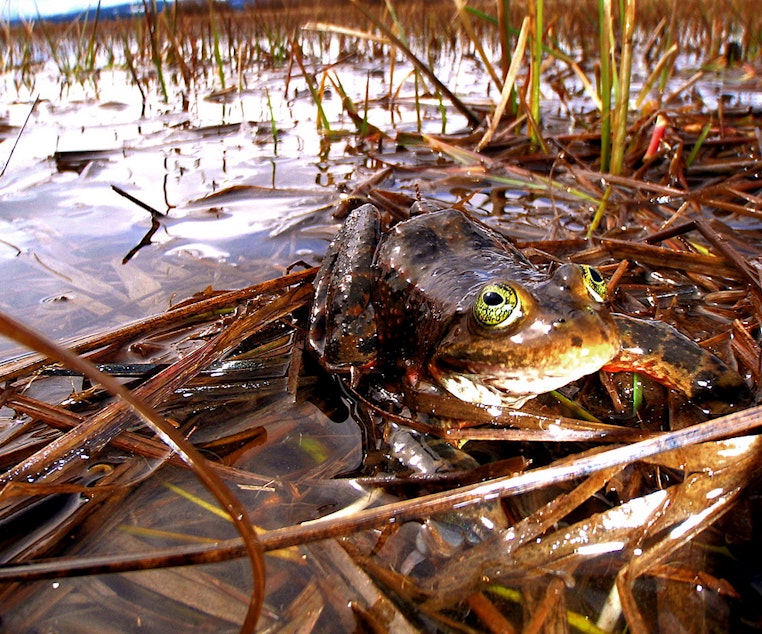'Frog of great importance' has new critical habitat in Washington

On Monday federal officials defined the critical habitat for a rare Northwest creature: the Oregon spotted frog. That designation is required since the frog was listed as threatened in 2014.
You'd be lucky to see or hear this frog.
The Oregon spotted frog is two-to-four inches long and is disguised by dark spots. It lives entirely in water (unlike many frogs who live partly on land) and makes low tapping sounds instead of a croak.
Spotted frogs rely so much on water that biologists use them to indicate how healthy wetlands and rivers are for other species.
The U.S. Fish and Wildlife Service says human development - along the I-5 corridor for example - led to the frog's demise. Now the agency has designated 14 public and private wetlands as critical habitat, scattered across western Washington and Oregon.
Sponsored
Federal agencies will need approval before doing any work that disrupts those zones, like dredging or drawing down water. But that doesn't apply to private landowners, according to Fish and Wildlife biologist Deanna Lynch.
She says when it comes to private landowners, "We'd like to work with them to help manage the habitat for the frogs, and in a lot of cases the reason the frog is there is because they've been managing those landscapes in an appropriate way."
The critical habitat covers 65,000 land acres and 20 miles of rivers. It includes parts of 10 Northwest counties, including Thurston and Whatcom in Washington and Wasco and Deschutes in Oregon.
The designation is getting praise from conservation groups. In particular, the Center for Biological Diversity has advocated for protecting the spotted frog since 2004.
The spotted frog carries a special level of importance for biologists. Its Latin name, Rana pretiosa, means "frog of great importance."
Sponsored
It's one of 32 amphibians currently protected under the ESA. The Center for Biological Diversity says it has petitioned for more to be listed.

